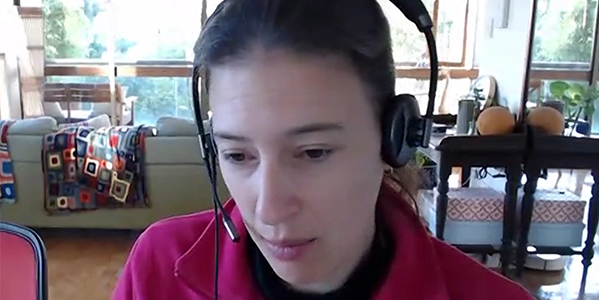Grid operators preparing to incorporate distributed energy resources into their systems must be ready to address the resulting challenges to stability, according to a report by the Australian Energy Market Operator (AEMO).
In a webinar for members of NERC’s System Planning Impacts from Distributed Energy Resources Working Group on Tuesday, Jenny Riesz, a principal for operational analysis and engineering at AEMO, shared some insights from recent studies of the power grid in the state of South Australia.
The state is considered a good test case because of the high level of DER installation there, with more than two-thirds of minimum operational demand met by distributed photovoltaic resources in 2019. In addition, the region shares only a single AC interconnector with the rest of Australia’s National Energy Market, which separates from the rest of the grid periodically; this provides an opportunity to study the operation of the local grid in isolation.
“With all of the distributed PV coming in, operational demand is dropping fairly dramatically, and some of our forecasts predict that we could hit zero operational demand in that region within the next one to three years, or perhaps even become negative,” Riesz said. “So [it’s] very timely to start to understand what operational challenges are likely to arise [and] how do we actually operate a grid that’s [majority supplied] from distributed photovoltaics.”
PV Cut-outs Endanger Reliability
One of the main challenges presented by South Australia’s DERs has been frequent disconnection of distributed PV resources during disturbances to the power system. In a study of about 13,000 PV systems operated by individual consumers over several years, AEMO observed that voltage disturbances frequently led PV sites to disconnect from the grid, with more severe changes in voltage leading to more disconnections. In the most extreme case, a change of 0.9 V caused about 40% of PV sites to disconnect.
Disturbed by this behavior, which is forbidden by Australia’s reliability standards, AEMO partnered with the University of New South Wales (UNSW) and the Australian Renewable Energy Agency to test the inverters used in PV systems. The testing program confirmed that the problem is serious and widespread.
“They’ve now looked at a whole suite of different inverters and tested what they do when exposed to a deep voltage disturbance, and … around half of the inverters that we’ve tested do in fact disconnect when we expose them to a voltage disturbance,” Riesz said.
While the investigation is not complete, the utility believes the problem could arise from inverter manufacturers designing products thinking only of the tests they will have to pass rather than the standards they are intended to fulfill. As no manufacturers are currently required to test for voltage fluctuations, it is likely that this feature is overlooked, resulting in products that pass muster in the factory but are unfit for real-world conditions.
This shortcoming could have major consequences: In a simulation of a severe but credible fault in the Adelaide metropolitan area — where about 60% of South Australia’s PV sites are located — about 20% of underlying load and 40% of PV resources in the state disconnected. While this can be tolerated when PV resources are supplying a lower portion of the net load, when their share of the grid is higher, the sudden widespread loss of generation could be much more severe, particularly if the event is triggered by the loss of a large synchronous generator or the region is in an islanded state at the time.
“We’re now looking at something on the order of a doubling of the largest credible contingency that we have to plan for and manage,” Riesz said.
Long-term Solutions Under Development
The extent of PV disconnection is expected to decrease in the short term because of the addition of four large synchronous condensers in South Australia next year. However, with PV installations projected to continue their strong growth in the following years, longer-term solutions are urgently needed.
AEMO has several programs underway to address the issue. The most basic change is to revise the relevant reliability standard to require voltage ride-through testing. The operator is currently awaiting industry comments on the proposed revisions; in the meantime, it is negotiating with the state government to impose the new requirement at the local level.
Further tests at UNSW have also found a number of additional functions that are not being met by existing equipment; for example, more than 30% of tested inverters could not provide over-frequency droop functions under simulated real-world conditions. The operator is concerned that a broader program may be needed to ensure compliance with reliability standards at inverter manufacturers.
“We’re about to launch a major audit to start to understand if that is indeed what’s going on, and then we’ll be putting together a working group to understand how we’re going to improve compliance going forward,” Riesz said. “It’s quite a tricky issue, and there’s not very clear lines of accountability in terms of who should be monitoring and enforcing that.”






